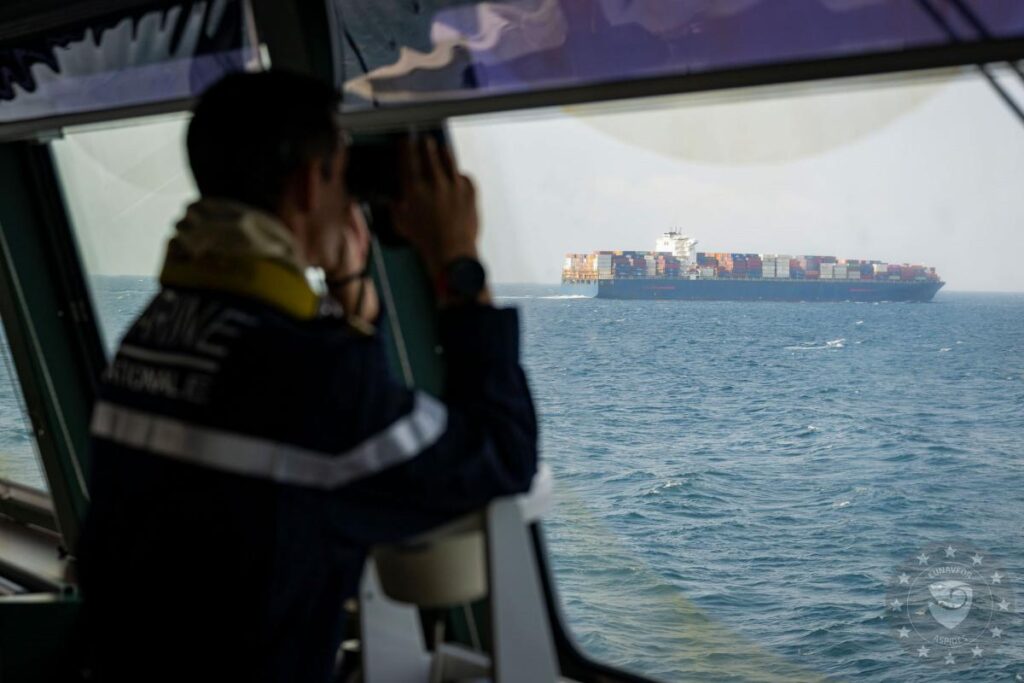A recent study reveals that Houthi rebels are extorting approximately $2 billion annually from shipping companies, demanding payments for not attacking their vessels in the Red Sea and Gulf of Aden. The unreleased report, compiled by a panel of Yemen experts for the United Nations Security Council, estimates that the Houthis are generating around $180 million per month from this protection scheme, although the panel has not independently verified this figure. The Houthis have escalated attacks on commercial shipping since November 2023, employing drones, missiles, and watercraft, resulting in casualties and damages to multiple vessels. This region, critical for maritime trade as it leads to the Suez Canal and Gulf of Aden, has seen significant disruptions in shipping operations.
The Houthis assert that they are only targeting ships from countries associated with Israel; however, their aggression has also affected vessels from their own allies, including Iran. These escalated hostilities have led major shipping firms to reroute their fleets away from the Red Sea, opting for longer journeys around the Cape of Good Hope. While this alternative route prolongs voyage times by 10 to 14 days and increases shipping costs, some local and regional vessels continue to operate in the Red Sea. Notably, CMA CGM, a leading French shipping company, remains one of the few major carriers maintaining scheduled services through this increasingly perilous area.
The study indicates that Houthi forces have executed over 130 attacks on merchant ships since November 2023, marking a significant increase in their maritime aggression, which the panel characterizes as unprecedented since World War II. The ability to carry out such an extensive range of attacks has notably amplified the Houthis’ influence in the region. They have resorted to using advanced weapon systems against civilian vessels, which has raised international concerns regarding maritime security in one of the world’s busiest shipping lanes.
Financially, the income generated from their protection racket is bolstering the Houthis’ military capabilities and operations, allowing them to extend their reach and partnerships with various militant groups, including al-Qaida, Hezbollah, Somali pirates, and Iranian military forces. The reported scale of military materiel transfers, financial backing, and training provided to the Houthis from external sources highlights a troubling escalation of the group’s operations and poses significant challenges for regional stability and security.
In addition to bolstering their military infrastructure, the Houthis have developed an extensive network that facilitates money laundering, arms smuggling, and the recruitment of combatants. This network enables them to sustain their operations while also creating numerous linkages with other destabilizing forces in the region, amplifying both their influence and the threat posed by such alliances. The capacity for asymmetrical warfare, as demonstrated by their recent maritime actions, shows that the Houthis are not merely a localized insurgent group but rather a considerable player in the broader geopolitical landscape of the Middle East.
The considerable revenue accrued from these extortion tactics not only fuels the Houthi conflict but also challenges the international community’s efforts to stabilize the region and protect maritime navigation. The implications of their actions extend beyond immediate shipping concerns, affecting global supply chains and international trade routes. As shipping companies continue to divert vessels away from the Red Sea, the ongoing situation raises urgent questions about maritime security, the effectiveness of international regulations, and the potential need for enhanced protective measures to secure vital trade routes in light of such persistent threats.

